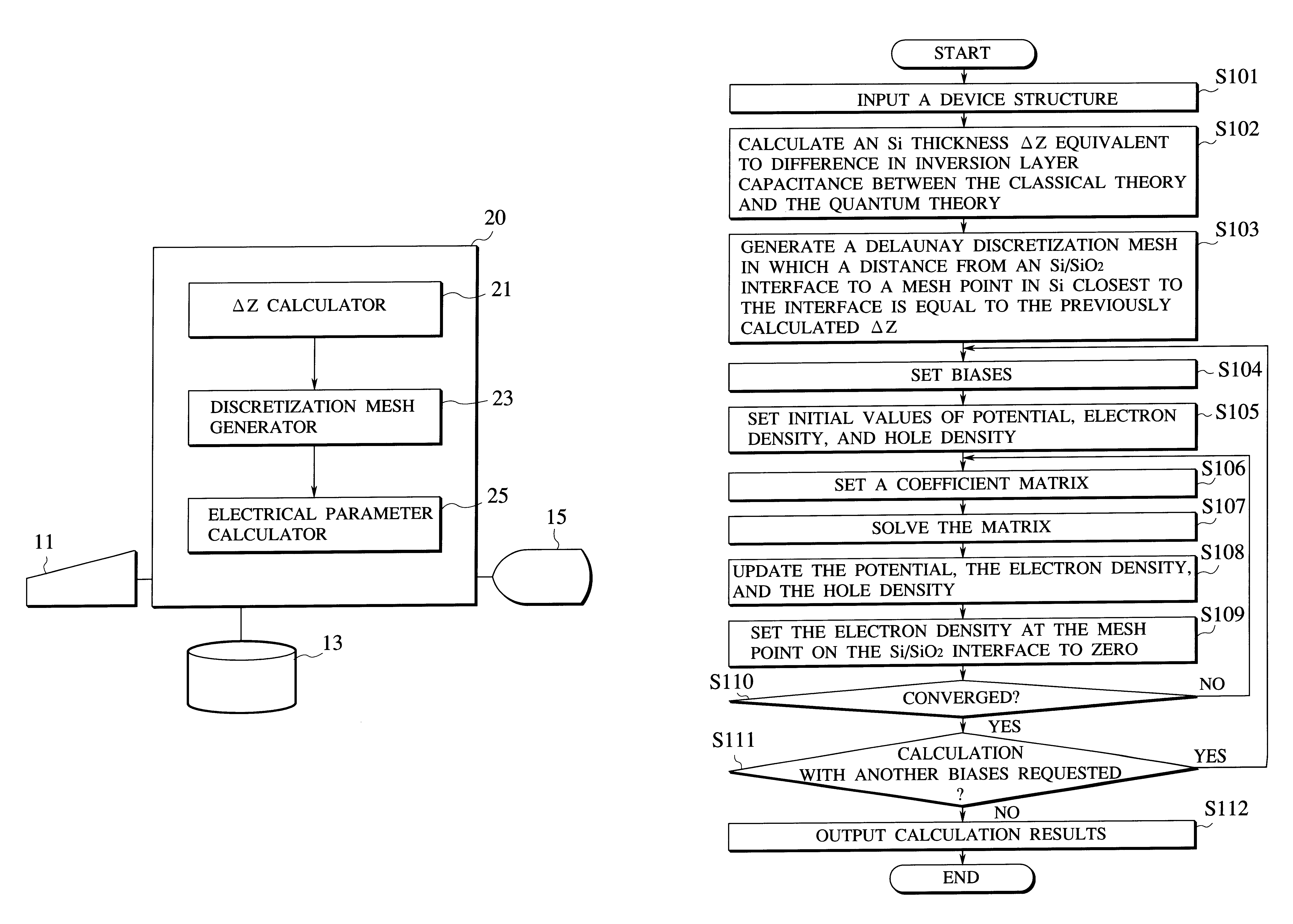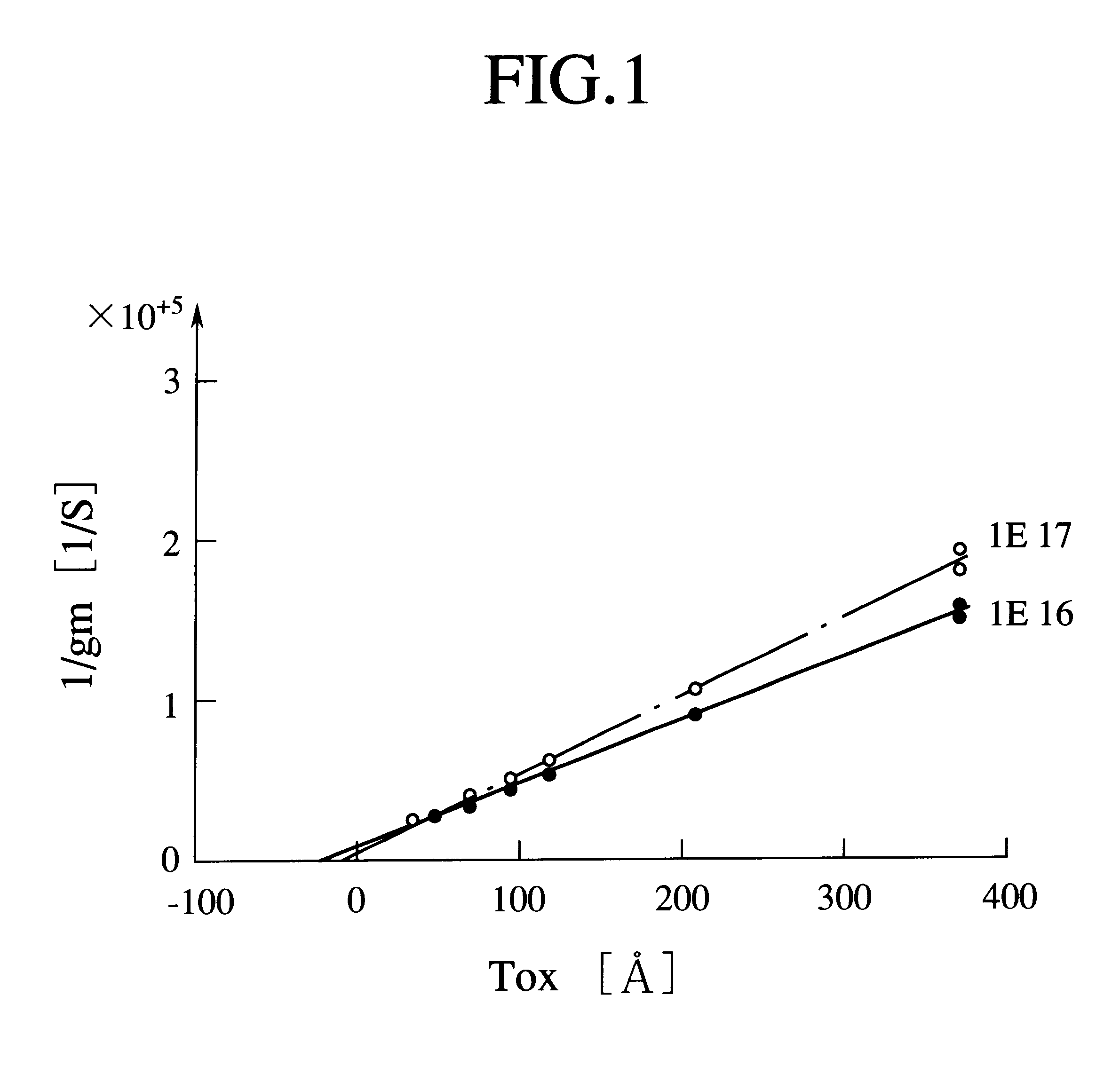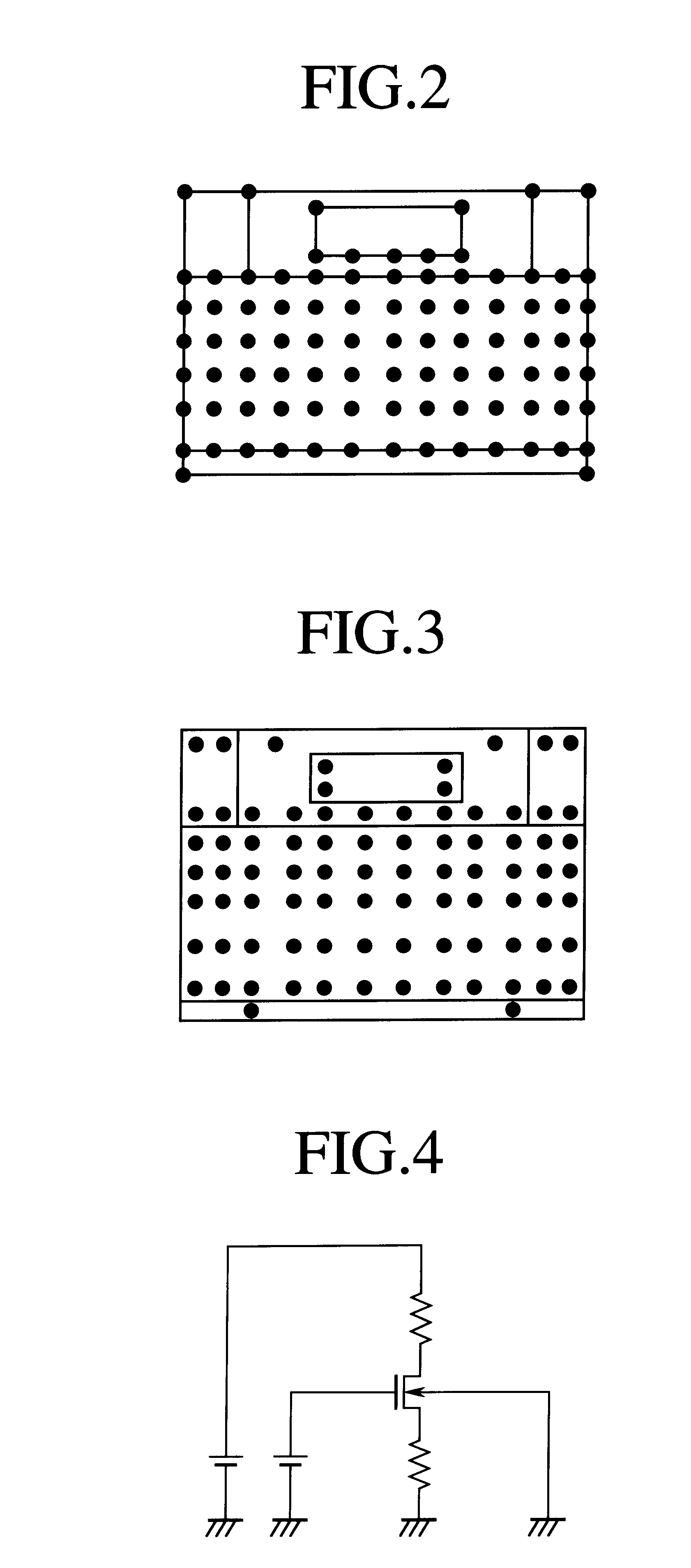Electrical parameter evaluation system, electrical parameter evaluation method, and computer-readable recording medium for recording electrical parameter evaluation program
- Summary
- Abstract
- Description
- Claims
- Application Information
AI Technical Summary
Problems solved by technology
Method used
Image
Examples
first embodiment
(First Embodiment)
FIG. 5 is a block diagram showing an electrical parameter evaluation system according to the present invention. The electrical parameter evaluation system can input device structure information of a semiconductor device and channel conductivity type information on an interface between a gate insulating film and a semiconductor substrate from an inputting means 11 as input data, store the input data into a memory means 13, calculate difference between an inversion layer capacitance by the classical theory and an inversion layer capacitance by the quantum theory and calculate .DELTA.Z which is a thickness of the semiconductor substrate equivalent to the difference in inversion layer capacitance by a .DELTA.Z calculator 21, and store the .DELTA.Z into the memory means 13. Then, the electrical parameter evaluation system can generate the Delaunay discretization mesh for the structure of the semiconductor device to be evaluated by a discretization mesh generator 23, and...
second embodiment
(Second Embodiment)
Next, an electrical parameter evaluation method according to a second embodiment of the present invention will be explained with reference to FIGS. 10 and 11. As has been shown in the first embodiment, one-dimensional MISFET device simulation may be carried out by solving the Poisson equation. However, in order to execute two-dimensional or three-dimensional electrical parameter evaluation, not only the Poisson equation but also an electron or hole continuous equation (current flow equation) must be solved. As an example to implement the above, a flowchart for two-dimensional analysis of the N-type MOSFET is shown in FIG. 10. The flowchart illustrative of the second embodiment differs from the flowchart illustrative of the first embodiment only in the process in step S206. Accordingly, the process in step S206 which generates the coefficient matrix under an assumption that electron current of the mesh points on the Si / SiO.sub.2 interface is set to zero will be exp...
third embodiment
(Third Embodiment)
Next, an electrical parameter evaluation method according to a third embodiment of the present invention will be explained with reference to FIG. 12. In the third embodiment, the case where electrical parameters of a device shown in FIG. 12 are calculated numerically will be thought of. The device shown in FIG. 12 has the interface between the insulator and the semiconductor substrate 108 from an interface 101 to an interface 105. Out of these interfaces, the interface between the gate oxide film and the semiconductor substrate 108 is the interface 103. Therefore, two-dimensional quantization of the carrier occurs at the interface 103, nevertheless two-dimensional quantization does not occur at remaining interfaces. As a result, a two-dimensional quantization effect must be considered only at the interface 103 between the insulator and the semiconductor substrate 108.
If the present invention is applied partially, for example, procedures will be taken as follows. As...
PUM
 Login to View More
Login to View More Abstract
Description
Claims
Application Information
 Login to View More
Login to View More - R&D
- Intellectual Property
- Life Sciences
- Materials
- Tech Scout
- Unparalleled Data Quality
- Higher Quality Content
- 60% Fewer Hallucinations
Browse by: Latest US Patents, China's latest patents, Technical Efficacy Thesaurus, Application Domain, Technology Topic, Popular Technical Reports.
© 2025 PatSnap. All rights reserved.Legal|Privacy policy|Modern Slavery Act Transparency Statement|Sitemap|About US| Contact US: help@patsnap.com



